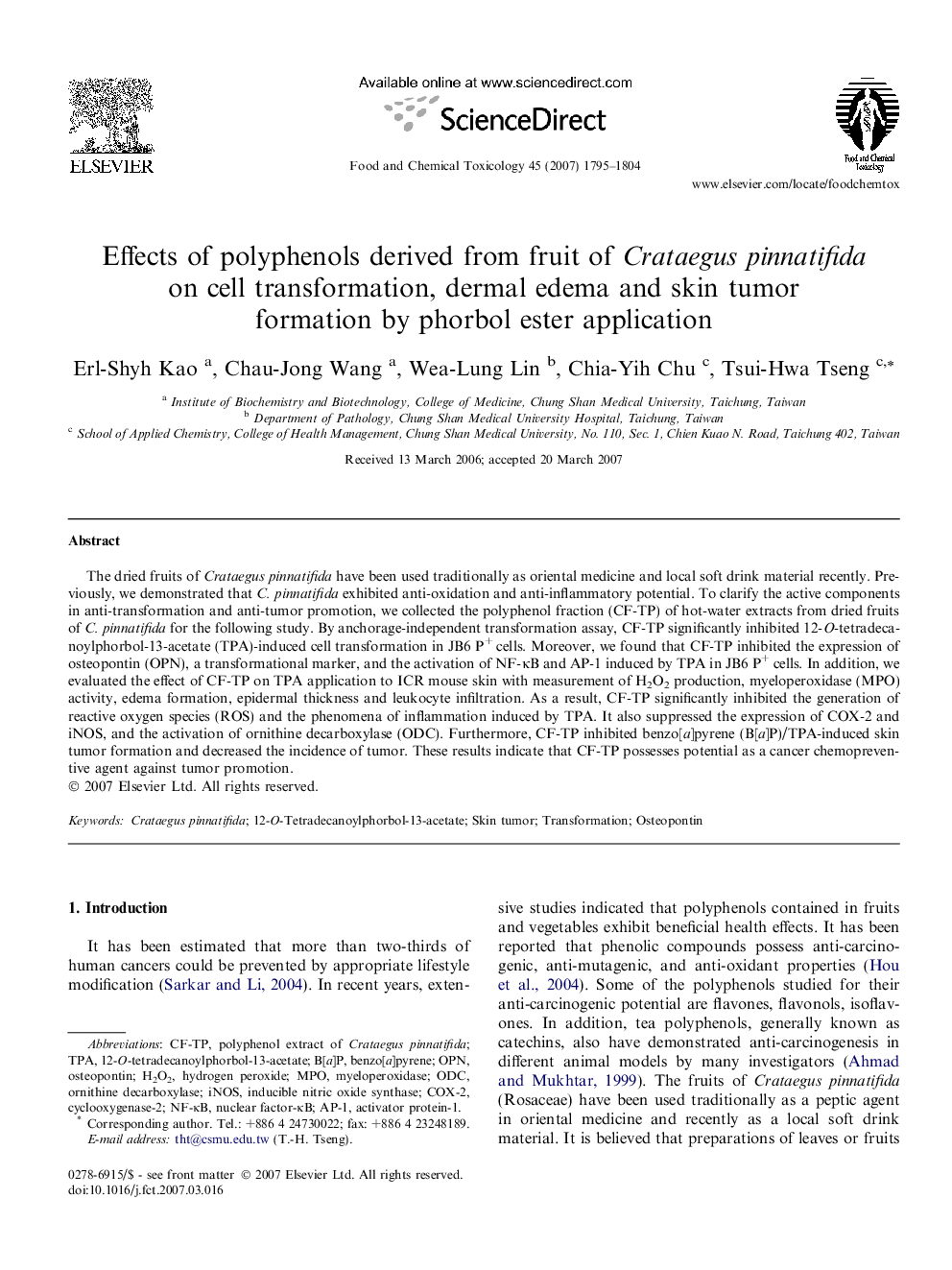| Article ID | Journal | Published Year | Pages | File Type |
|---|---|---|---|---|
| 2588066 | Food and Chemical Toxicology | 2007 | 10 Pages |
The dried fruits of Crataegus pinnatifida have been used traditionally as oriental medicine and local soft drink material recently. Previously, we demonstrated that C. pinnatifida exhibited anti-oxidation and anti-inflammatory potential. To clarify the active components in anti-transformation and anti-tumor promotion, we collected the polyphenol fraction (CF-TP) of hot-water extracts from dried fruits of C. pinnatifida for the following study. By anchorage-independent transformation assay, CF-TP significantly inhibited 12-O-tetradecanoylphorbol-13-acetate (TPA)-induced cell transformation in JB6 P+ cells. Moreover, we found that CF-TP inhibited the expression of osteopontin (OPN), a transformational marker, and the activation of NF-κB and AP-1 induced by TPA in JB6 P+ cells. In addition, we evaluated the effect of CF-TP on TPA application to ICR mouse skin with measurement of H2O2 production, myeloperoxidase (MPO) activity, edema formation, epidermal thickness and leukocyte infiltration. As a result, CF-TP significantly inhibited the generation of reactive oxygen species (ROS) and the phenomena of inflammation induced by TPA. It also suppressed the expression of COX-2 and iNOS, and the activation of ornithine decarboxylase (ODC). Furthermore, CF-TP inhibited benzo[a]pyrene (B[a]P)/TPA-induced skin tumor formation and decreased the incidence of tumor. These results indicate that CF-TP possesses potential as a cancer chemopreventive agent against tumor promotion.
